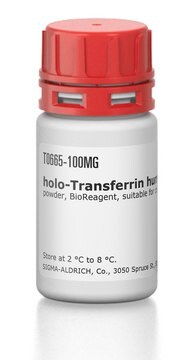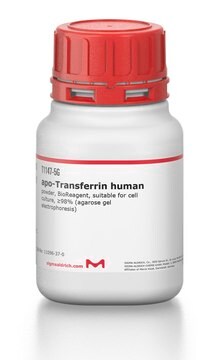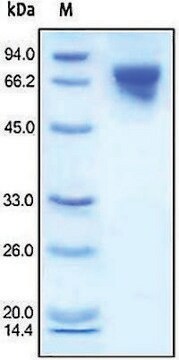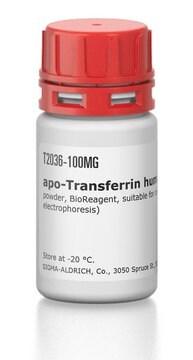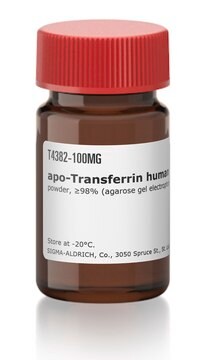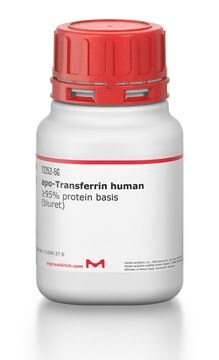T4132
Holo-transferrina human
≥98%
Sinónimos:
Siderofilina, saturada de hierro
About This Item
Productos recomendados
origen biológico
human
Nivel de calidad
Análisis
≥98%
formulario
powder
contenido de hierro
1100-1600 μg/g
técnicas
cell culture | mammalian: suitable
impurezas
HIV, hepatitis B and hepatitis C, none detected
Nº de acceso UniProt
temp. de almacenamiento
2-8°C
Información sobre el gen
human ... TF(7018)
¿Está buscando productos similares? Visita Guía de comparación de productos
Descripción general
Aplicación
- in colony-forming assays
- for transferrin uptake and recycling in transfected HEK-293 (human embryonic kidney) cells or bone marrow cells
- for the preparation of luteinizing and non- luteinizing granulose cells
Acciones bioquímicas o fisiológicas
Nota de análisis
Cláusula de descargo de responsabilidad
Código de clase de almacenamiento
11 - Combustible Solids
Clase de riesgo para el agua (WGK)
WGK 3
Certificados de análisis (COA)
Busque Certificados de análisis (COA) introduciendo el número de lote del producto. Los números de lote se encuentran en la etiqueta del producto después de las palabras «Lot» o «Batch»
¿Ya tiene este producto?
Encuentre la documentación para los productos que ha comprado recientemente en la Biblioteca de documentos.
Los clientes también vieron
Protocolos
Separation of HPLC protein standard mixture, analytical standard
Nuestro equipo de científicos tiene experiencia en todas las áreas de investigación: Ciencias de la vida, Ciencia de los materiales, Síntesis química, Cromatografía, Analítica y muchas otras.
Póngase en contacto con el Servicio técnico